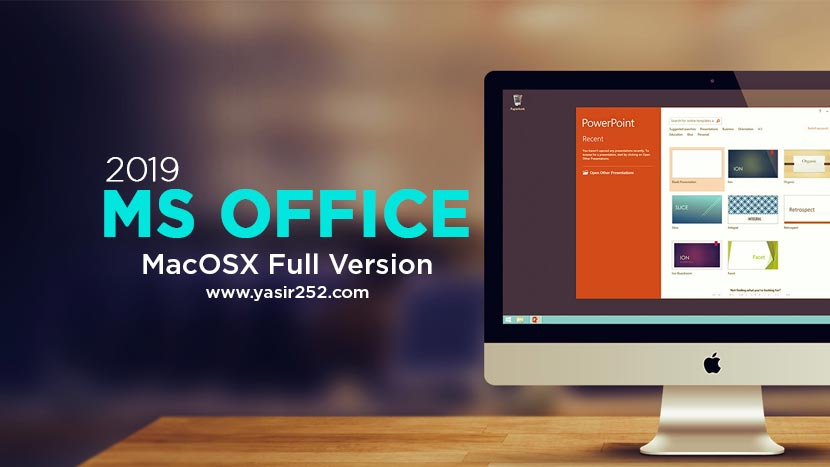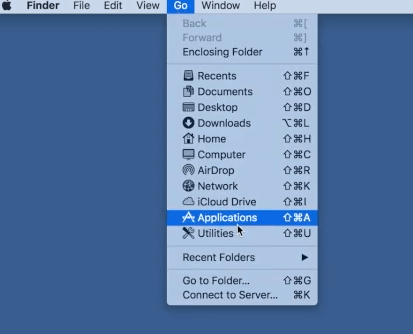- Office 2016 Mac Database Utility Software
- Microsoft Office 2016 Mac Download
- Office 2016 Mac Database Utility Billing
This site contains user submitted content, comments and opinions and is for informational purposes only. Apple may provide or recommend responses as a possible solution based on the information provided; every potential issue may involve several factors not detailed in the conversations captured in an electronic forum and Apple can therefore provide no guarantee as to the. Outlook 2016 and 2019 use the same general scheme as was used in 2011. In 2016 & 2019, like 2011, each Identity is a folder, except that Identities are now called “Profiles” and the Profile folders are not in the Documents folder. Office 2016 and 2019 PROFILE LOCATION. Features of Microsoft Office 2016. Before you try the keys in this post, let’s look at some of the most amazing features of the software. Microsoft released Office 2016 on July 9 th, 2015 for Mac OS and for Windows OS on September 22 nd, 2015 for all Office 365 subscribers. It is the best word processor for students and faculty. Microsoft Office 2016 for Mac is by far the most powerful set of productivity apps for Apple computers, fitting smoothly into OS X and offering strong cloud support. A database manager, PDF.
If talking about email clients, MS Outlook comes first in users mind as it is one of the most frequently used email application. It manages emails, contacts, calendars, tasks etc. and it is available for both Windows and Mac platforms. However, it acts as a personal information manager that deals with the user’s information in a proficient way. Sometimes Outlook application cannot start when OLM.DLL not found. In this situation, users need to re-install the application to resolve this problem. Hence, in this write-up, we will tell you how to rebuild Mac Outlook database in both 2011 and 2016 versions. First, let’s have a look at symptoms when Mac Outlook stops responding. Apart from this, we will also discuss the reasons which may result in corruption of Mac Outlook and requires to rebuild Outlook Database Mac 2016, 2011.
Top Reasons to Rebuild Outlook Database Mac 2016, 2011
There are multiple due to which Mac Outlook user need to rebuild Outlook database Mac 2011, 2016:
- Mac is slow and unresponsive
- Mac system terminates sudden or after a fix time-period
- Users are unable to locate and find the OLM data file
- Mac Outlook freezes or crashes repeatedly without any warning
- “Access denied” error message pops-up & emails are not accessible
- Error messages on the screen with error description & probable resolution
One Stop Solution to Repair Mac Outlook 2019, 2016, 2011 Database
If you are facing issues with Mac Outlook database, then you can try SysTools Outlook Mac Database Recovery Tool for repair and rebuild purpose. It is a one stop solution which can help users to repair database of Mac Outlook 2019, 2016, 2011 or Outlook 365. It offers many unique features which makes the entire process hassle-free. Some of the top features are mentioned below:
- Performs deep level scan for recovery
- Option to export data in 10 file formats
- Feature to maintain Folder Hierarchy
- Filter data using Date & Category based filter
Learn How to Rebuild Outlook Database Mac 2016
In order to rebuild Outlook database Mac 2016, perform the below-mentioned steps via Outlook profile manager. It will easily manage and rebuild Mac Outlook 2016 profiles.
Step 1: Access Outlook Profile Manager
Office 2016 Mac Database Utility Software
- First of all, you need to open the Finder menu and then go to the Applications option.
- Then, click on the Control in the Applications window.
- Now, you have to click on Microsoft Outlook & choose Show Package Contents.
- After this, navigate to Contents and then go to the Shared Support.
- Now, open the Outlook Profile Manager and access it.
Step 2: Create a New Profile for Outlook Mac 2016
- Once you have opened the Outlook Profile Manager, click on the + (plus) icon.
- Now, go to the text box and type a name for the new profile.
- Then, press Return option to create a new profile.
Step 3: Delete a Profile that Exists in Outlook Previously
- Now, you need to delete a profile in Outlook Profile Manager, click on the profile.
- After that, click on the – (minus) button.
- A confirmation dialog box will appear, click on the Delete button in the confirmation dialog box.
Step 4: Set a Default Profile
At last, you have to set the default profile, to rebuild Outlook database Mac 2016:
- Go to the Outlook Profile Manager & set a default profile by clicking on the profile to set as default option.
- Then, click on the Gear button and choose Set as default option.
Top Reasons to Rebuild Mac Outlook 2011 Database
There are many causes that lead Mac Outlook application inaccessible and require rebuilding Mac Outlook database in 2011 or 2016:
- Network failure or unexpected server issue
- When malware or virus attack on the network
- If Microsoft Exchange server gets crash Suddenly
- The Outlook for Mac crashes due to unexpected problems
- Corruption occurs during Outlook for Mac updates process
- If corruption found in the storage device where Outlook is installed
- Outlook for Mac is not installed properly or there is a disruption in the installation
Tips & Tricks to Rebuild Database in Mac Outlook 2011
To rebuild the Outlook for Mac 2011 Database to solve problems, you just need to follow the steps given below:
Step 1: Exit from All the Applications
- First of all, go to the toolbar that is available on top then click on the Application name menu and select the Quit option.
- Then, long press on the Command and Option keys. After that, press on the Escape button from the keyboard.
- Now, select the application you need to quit from the Force Quit application window.
- After that, just click on the Force Quit button. However, you cannot quit the Finder window.
- Finally, close the windows with the red circular icon that is available on the top left corner of the screen.
Step 2: Check the Available Space on the Hard disk
Now, to maintain the Mac Outlook database, you always need sufficient storage space. However, you need to have almost three times space as much space as the recent Outlook size is. Suppose, your Outlook database size is 1 GB, then you need to have 3GB space for efficiency.

Step 3: Create a Backup of Current Profile
As the name suggests, backup is important to avoid the risk of losing data. Therefore, you should create a backup of your current database of Mac Outlook 2011 by following these steps:
- Go to the Finder option, then click on Go option >> Home.
- After that, open the Documents folder >> Microsoft User data folder.
- Next, right click on the Office 2011 identities folder & select the Duplicate option to build a new folder. Exit from the Mac Outlook application.
- Now, you have created a backup of your current Outlook account database.
Step 4: Rebuild Mac Outlook 2011 Database Using Inbuilt Utility
- At first, exit all running applications from the system.
- Then, long press the Option key & start the Mac Outlook 2011 application or open the Application Folder.
- After that, click on the Microsoft Office 2011 then double-click on the Microsoft Database Utility app.
- Now, select the Database & click on Rebuild option.
- Now, a window will open that shows the recreating database progress. After completion of the operation, you will get the message “Your database was rebuilt successfully.”
- Start Outlook 2011 application and verify if the problem is resolved. If the problem is resolved, then you can access the Outlook application. But, if the problem still persists, then you need to create a new Identity or profile to resolve the issue.
Step 5: Create a New profile in Outlook 2011
- At first, exit all the applications. Then, long press on the Option key & click on the Outlook to open Microsoft database utility.
- After that, click on the (+) icon to add a new identity & enter the name of a new identity.
- Now, set the newly created Outlook profile as a default.
- Finally, you will recreate the new Outlook profile.
Conclusion
The Outlook for Mac application is an important email client from the user perspective and it supports 2011 and 2016 versions of Outlook. In case, if the database gets corrupt, Mac Outlook is unable to access, then users need to rebuild Mac Outlook database. Thus, using the above-discussed methods for both Outlook 2016 and 2011, you can recreate a new profile in Mac Outlook and resolve the error in no time.
Comments are closed.
To uninstall Office 2016 for Mac, move the applications and user preference files to the Trash. Once you've removed everything, empty the Trash and restart your Mac to complete the process. You can also perform a complete uninstall for Office 2016 for Mac if you are troubleshooting an issue.
You must be signed in as an administrator on the mac or provide an administrator name and password to complete these steps.
1. Remove Office 2016 for Mac applications
Open Finder > Applications.
Command +click to select all of the Office 2016 for Mac applications.
Ctrl+click an application you selected and click Move to Trash.
2. Remove files from your user Library folder
To remove files from your user Library folder, you'll need to first set the Finder View options.

In Finder, press +Shift+h.
On the Finder menu at the top, click View > as List, and then click View > Show View Options.
In the View Options dialog box, select Show Library Folder and save.
Back in Finder, open Library > Containers and ctrl+click each of these folders and Move to Trash. Not all of these folders may be present.
com.microsoft.errorreporting
com.microsoft.Excel
com.microsoft.netlib.shipassertprocess
com.microsoft.Office365ServiceV2
com.microsoft.Outlook
com.microsoft.Powerpoint
com.microsoft.RMS-XPCService
com.microsoft.Word
com.microsoft.onenote.mac
Warning: Outlook data will be removed when you move the three folders listed in this step to Trash. You should back up these folders before you delete them.
Click the back arrow to go back to the Library folder and open Group Containers. Ctrl+click each of these folders if present, and Move to Trash.
UBF8T346G9.ms
UBF8T346G9.Office
UBF8T346G9.OfficeOsfWebHost
3. Remove from dock and restart
Microsoft Office 2016 Mac Download
If you put any of the Office applications in your dock, go to each one and ctrl + click > Options > Remove from Dock.
Restart your Mac to complete the uninstall.
Office 2016 Mac Database Utility Billing
*Reference: https://support.office.com/en-us/article/uninstall-office-2016-for-mac-eefa1199-5b58-43af-8a3d-b73dc1a8cae3
